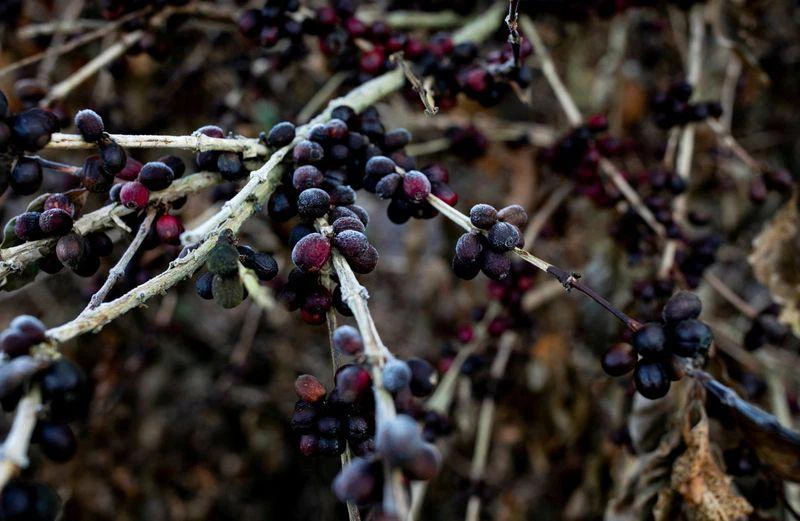Only in the first 9 months of the year, forest fires, droughts, and frosts in turn landed and devastated Brazil, causing coffee farmers to lose everything. Forecast Brazil’s coffee production In 2021, it will decrease by more than 25%, businesses start to fight for supply.

Goulart’s coffee trees turn yellow, dry like firewood after the frost. (Photo: Bloomberg)
Brazil’s coffee production fell by 25%
Only in the first 9 months of the year, forest fires, droughts, frosts, the “children” of climate change, one by one, devastated Brazilian agriculture.
And at the heart of this sweep is the Caconde region, a village nestled in the forests of northwestern Sao Paulo state.
Mr. Antonio Ribeiro Goulart, a farmer who owns a farm with more than 11,000 coffee trees, said a green coffee plateau turned into dry wood after only 24 hours of frost.
Mr. Goulart has lost everything. A month later, he still doesn’t seem to be completely shocked by what has happened.

Brazil’s coffee production fell by more than 25%, pushing up prices. (Photo: Reuters)
In 2019, Mr. Goulart mortgaged part of the farm’s coffee to buy a coffee peeler. However, with this situation, the coffee is no longer available and the debt cannot be paid.
This farm has to wait until 2023 at the earliest to have coffee to harvest. And farm owners will have to negotiate with suppliers on terms to suit the actual situation.
“Like thousands of people around, my family will cut down the small branches and hope the sprouts will grow back.
In the event that the whole tree is dead, there is no life left, we are forced to destroy the entire coffee garden and start from zero. Really, we have no other choice.‘ said Mr. Goulart.
According to Mr. Ademar Pereira, representative of the Caconde Coffee Farmers Association, said the drought has lasted for the 7th consecutive month. Currently, the soil moisture is only 20% while the ideal humidity for growing coffee is 60%. The weather was too harsh to have a good harvest.
Where coffee accounts for 80 percent of the region’s economic value, many farmers are as lost as Mr. Goulart.
After the drought and frost, 1.5 million square kilometers of coffee were damaged, an area the size of Peru. Brazil’s coffee industry is facing losses of up to 1.3 billion pounds (nearly 600 thousand tons) of coffee, enough coffee for Americans to drink for 4 months.
The loss of the coffee capital of Brazil made the world coffee market begin to shake. Brazil’s coffee production forecast in 2021 will decrease by more than 25% causing the price of arabica coffee to increase by 30% at the end of July.
This has created an underground battle between the world’s largest coffee retailers such as Starbucks Corp. and Nestle SA to ensure supply.
“These brands are competing quite fiercely. Starbucks announced the purchase and storage of coffee months in advance, while Nestle actively bought insurance policies to prevent risks and ensure financial security for the company until early next year.“, said Jack Scoville, a trader at Price Futures Group in Chicago.
However, Mr. Scoville warned that successful price fixing does not mean retailers have enough coffee in the long run.
The coffee capital of Brazil will have an impact on the market for many years, as evidenced by the partners that often import coffee from Brazil and Vietnam are tending to move to other markets to make up for this shortfall. .
That’s exactly the situation Bader Olabi, a roaster in Istanbul, finds himself in. He is looking for new suppliers in Colombia, India and Africa to replace the 100 containers of coffee he normally buys from Brazil each year.
However, Mr. Olabi said that convincing customers will be difficult because so far consumers believe that Brazilian coffee is the best.
In the state of Texas, coffee trading company Greater Goods Coffee Co., is planning to raise prices soon to make up for the costs it has to pay when importing coffee. Ms. Sara Gibson said consumers have to pay higher coffee bills to help the agricultural industry grow sustainably against climate change.
“This is not easy to accept, but we need to do to minimize the unfortunate consequences,” Ms. Sara said.
According to vietnambiz
